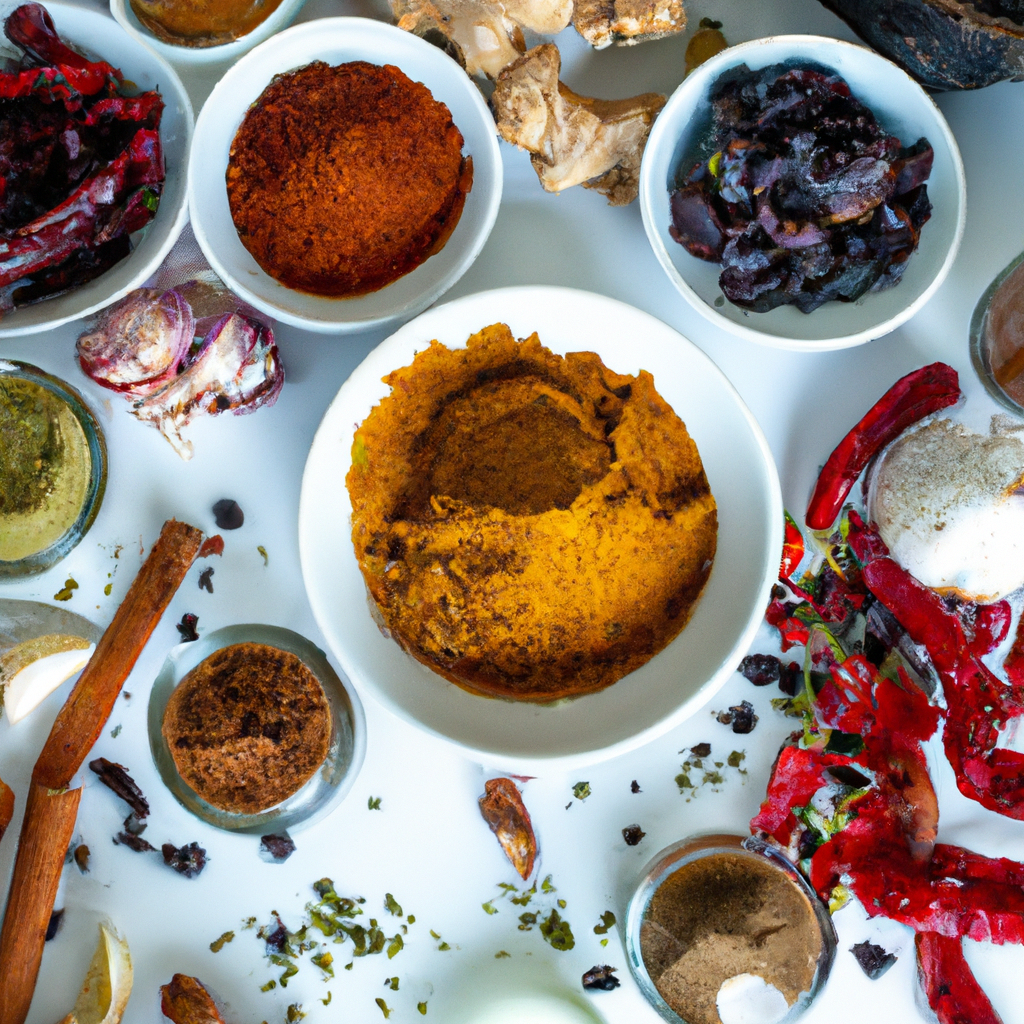
In today’s globalized world, American cuisine has evolved beyond its traditional staples of tacos and sushi. With a melting pot of cultures, the United States is home to a diverse culinary landscape that showcases a rich tapestry of flavors from around the world. In this article, we delve into lesser-known global food influences that have shaped modern American dining. From Ethiopian injera to Indian dosas, these culinary gems have found their way into the hearts and stomachs of food enthusiasts across the nation.
The Rise of Ethiopian Cuisine: Injera and Flavors from the Horn of Africa
Ethiopian cuisine, with its unique flavors and communal dining experience, has gained popularity in recent years. One of the stars of Ethiopian cuisine is injera, a sourdough flatbread made from teff flour. This gluten-free and nutrient-rich bread serves as the base for various stews, known as wats, which are often made with lentils, vegetables, or spiced meats. The combination of injera’s tangy taste and the bold flavors of the wats creates a truly immersive dining experience.
Unveiling the Delicacies of Lebanese Mezze
Lebanese cuisine, known for its fresh ingredients and vibrant flavors, has also made its mark on American dining. Mezze, a selection of small dishes served as appetizers or a complete meal, is a cornerstone of Lebanese cuisine. From creamy hummus to smoky baba ganoush, these flavorful dips are often accompanied by warm pita bread. Tabbouleh, a refreshing salad made with bulgur wheat, parsley, and mint, adds a burst of freshness to any mezze spread. Lebanese cuisine’s emphasis on sharing and communal dining has resonated with American diners seeking a more interactive and diverse culinary experience.
Vibrant Vietnamese Street Food: Banh Mi and Pho
Vietnamese cuisine, with its delicate balance of flavors and fresh ingredients, has gained a loyal following in the United States. Two iconic dishes, banh mi and pho, have become synonymous with Vietnamese street food. Banh mi, a Vietnamese sandwich filled with various meats, pickled vegetables, and herbs, offers a fusion of French and Vietnamese culinary influences. Meanwhile, pho, a flavorful noodle soup made with aromatic herbs and spices, has captivated the taste buds of many Americans. The rise of banh mi and pho stands across the nation showcases the growing appreciation for Vietnamese cuisine and its vibrant street food culture.
Exploring the Richness of Indian Cuisine: Dosas and Curries
Indian cuisine, known for its bold and complex flavors, has long been celebrated around the world. In recent years, Indian dishes such as dosas and curries have gained popularity in the American culinary scene. Dosas, thin and crispy fermented rice and lentil crepes, are often served with a variety of chutneys and sambar, a lentil-based soup. The versatility of dosas, which can be filled with different ingredients, appeals to food enthusiasts looking for unique and customizable dining experiences.
Curries, another cornerstone of Indian cuisine, come in a diverse range of flavors and heat levels. From creamy butter chicken to spicy vindaloo, each curry tells a story of regional spices and cooking techniques. The explosion of Indian flavors across American cities reflects a growing appreciation for the complexity and diversity of Indian cuisine.
Fusion Flavors: Korean-Mexican and Japanese-Brazilian Mashups
Beyond the traditional boundaries of cuisine, fusion flavors have emerged as a trend in modern American dining. Korean-Mexican fusion, popularized by the Kogi BBQ food truck in Los Angeles, combines elements of Korean and Mexican cuisines to create exciting and novel dishes. Korean barbecue tacos, filled with marinated meats, kimchi, and spicy sauces, have become a hit among food enthusiasts seeking a fusion of flavors.
Similarly, Japanese-Brazilian fusion, known as Nikkei cuisine, blends Japanese and Brazilian culinary traditions. Nikkei dishes often feature ingredients like fresh seafood, tropical fruits, and traditional Japanese seasonings. This unique fusion showcases the creativity and innovation that can arise when different culinary cultures intersect.
Conclusion
As we have explored in this article, American dining has expanded beyond the realms of tacos and sushi. The lesser-known global food influences that have made their way into the modern American culinary scene have added depth, diversity, and excitement to our palates. From Ethiopian injera to Indian dosas, these culinary gems offer a glimpse into the rich tapestry of flavors that make up our global food heritage.
As food enthusiasts continue to embrace and celebrate the world’s cuisines, the American dining landscape will continue to evolve and surprise. With each new discovery, we uncover the untold stories behind the dishes we savor and the cultures they represent. So, let us embark on a culinary adventure, one plate at a time, as we explore the lesser-known global food influences that have shaped modern American dining.
